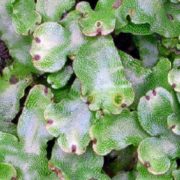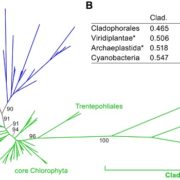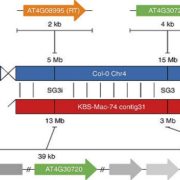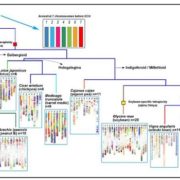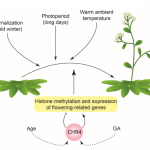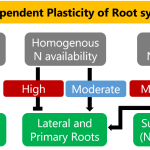Hornwort genomes (Nature Plants)
 A major update in plant genome information is taking place. Two independent groups have published genomes of hornwort species from the Anthoceros genus. Both papers arrive at similar conclusions supporting the model of a single “Setaphyta” clade, with hornworts sister to liverworts and mosses. These genomes shed light on the conserved repertoire of bryophyte genes and help to elucidate the genetic features of the most recent common ancestor of embryophytes (land plants). Anthoceros genomes lack whole-genome duplications as do most liverworts and, like Marchantia polymorpha, present low genetic redundancy. In the Li et al. paper, three genomes from two different Anthoceros species were sequenced. Additionally, they provide a chromosome-scale assembly of the A. agresti genome, revealing an even distribution of genes and repetitive regions without enrichment in the centromeric regions, an unusual feature that seems to be similar to other bryophyte genomes. They also identified genes associated with cyanobacteria symbiosis, and discuss possible genes involved in pyrenoid carbon-concentration mechanism. The Zhang et al. paper presents the genome of a third species, A. angustus. They highlight horizontal gene transfer events that could be relevant for metabolic processes. Without doubt, Anthoceros genomes will be an ineludible reference for evolutionary studies aiming to understand plant macroevolution. (Summary by Facundo Romani) Nature Plants 10.1038/s41477-020-0618-2 and 10.1038/s41477-019-0588-4
A major update in plant genome information is taking place. Two independent groups have published genomes of hornwort species from the Anthoceros genus. Both papers arrive at similar conclusions supporting the model of a single “Setaphyta” clade, with hornworts sister to liverworts and mosses. These genomes shed light on the conserved repertoire of bryophyte genes and help to elucidate the genetic features of the most recent common ancestor of embryophytes (land plants). Anthoceros genomes lack whole-genome duplications as do most liverworts and, like Marchantia polymorpha, present low genetic redundancy. In the Li et al. paper, three genomes from two different Anthoceros species were sequenced. Additionally, they provide a chromosome-scale assembly of the A. agresti genome, revealing an even distribution of genes and repetitive regions without enrichment in the centromeric regions, an unusual feature that seems to be similar to other bryophyte genomes. They also identified genes associated with cyanobacteria symbiosis, and discuss possible genes involved in pyrenoid carbon-concentration mechanism. The Zhang et al. paper presents the genome of a third species, A. angustus. They highlight horizontal gene transfer events that could be relevant for metabolic processes. Without doubt, Anthoceros genomes will be an ineludible reference for evolutionary studies aiming to understand plant macroevolution. (Summary by Facundo Romani) Nature Plants 10.1038/s41477-020-0618-2 and 10.1038/s41477-019-0588-4



